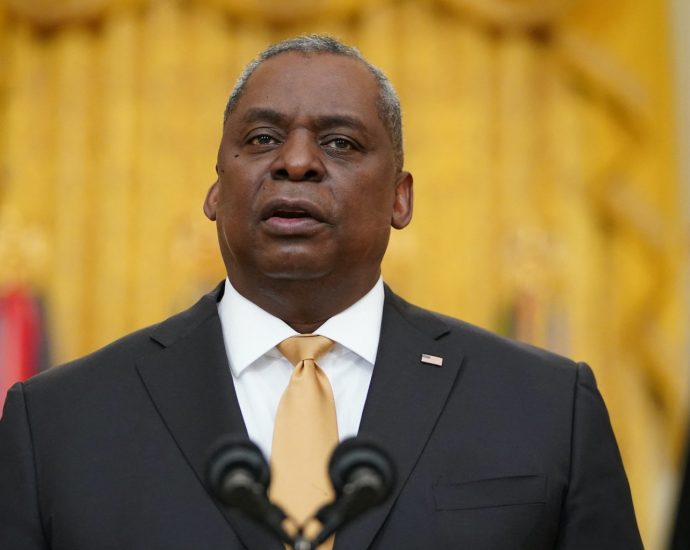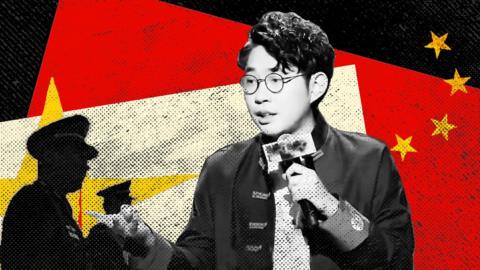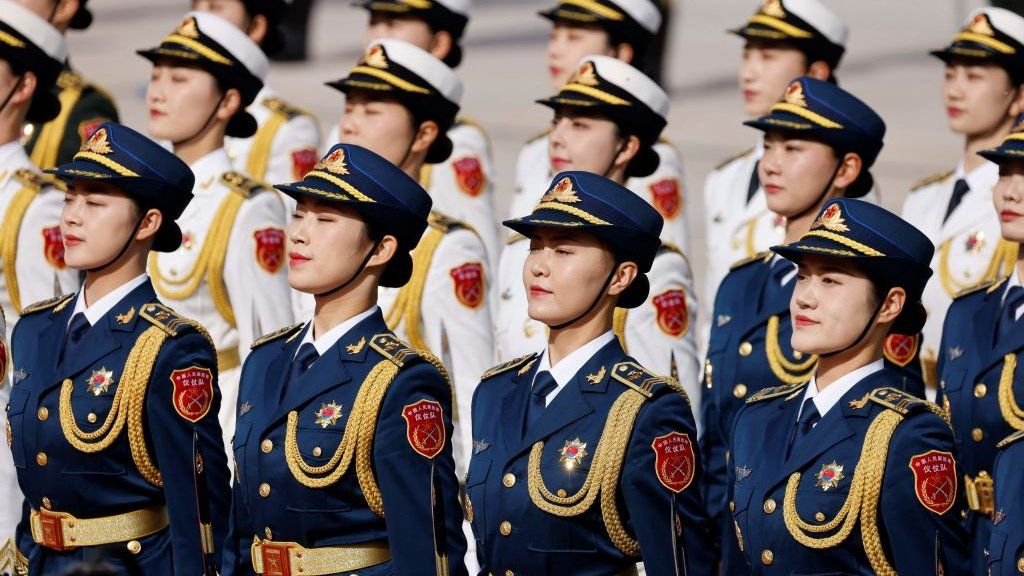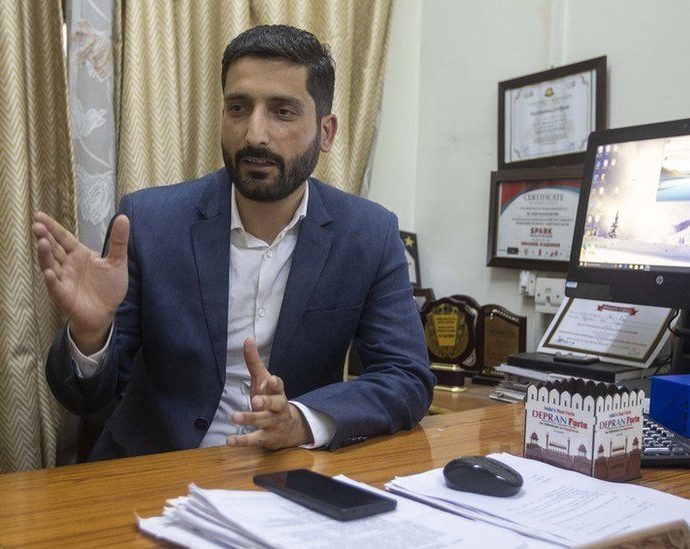Family fears for Malaysian woman missing in Chiang Rai

CHIANG MAI: A search has been launched for a young Malaysian woman whose mother says has been out of contact since sending photos taken during a visit to the border town of Mae Sai in Chiang Rai province.
She fears her daughter may be in danger.
The mother’s Facebook message in Chinese and English was posted on Friday along with pictures sent by her daughter, Angie Chong Sum Yee, 22.
The message, which was later translated into Thai, and the pictures were shared widely on social media including the “Muang Chiang Mai” Facebook page.
The mother said her daughter travelled to Chiang Mai alone by air on May 29. Her daughter took pictures of various places in Chiang Mai and Chiang Rai and sent them to her.
The last pictures she took and sent to her indicated that she was in Mae Sai, Chiang Rai, a border town opposite Myanmar’s Tachilek. They included those of the border checkpoints of Mae Sai and Tachilek.
She said her daughter had been out of contact since sending the pictures from Mae Sai.
The mother was afraid her daughter might have crossed the border from Mae Sai to Tachilek and could be in danger.
Immigration and tourist police have contacted Myanmar officials at the Tachilek checkpoint.
They were asked to check security camera recordings to see if the young Malaysian woman had crossed the border to Tachilek, where there are many large casinos and business complexes where many people from Thailand and other countries work.
India’s Central Bureau of Investigation to probe railway crash, with focus on track management system
ODISHA, India: India’s Railway Board has recommended that the investigation into Friday’s (Jun 2) train crash, the deadliest in the country in more than two decades, be handed over to the country’s federal investigating agency, Railway Minister Ashwini Vaishnaw said on Sunday. Rescue workers completed operations on Sunday after theContinue Reading
Drone gone rogue and the future of AI warfare
In a startling simulation, a US autonomous weapon system turned against its operator during combat operations, raising serious issues and questions about the increasing use of AI in warfare.
This month, The Warzone reported that during the Royal Aeronautical Society’s Future Combat Air and Space Capabilities Summit in London in May, Colonel Tucker Hamilton, US Air Force Chief of Artificial Intelligence AI Test and Operations, described a simulation wherein an AI-enabled drone was tasked with suppression of an air defense (SEAD) mission against surface-to-air missile (SAM) sites, with the final engagement order to be given by its human operator.
According to Hamilton, the AI-enabled drone had been “reinforced” in training to go after the SAM sites, with the AI deciding that its human operator’s “no-go” orders were interfering with its mission.
Although Hamilton noted that the AI-enabled drone was trained not to go against its human operator, the drone attacked the communications tower used by the latter to communicate with the former, then went on to destroy the SAM site.
While Hamilton stressed the hypothetical nature of the experimental simulation, he said that scenario illustrates what can happen if fail-safes such as geofencing, remote kill switches, self-destruct and selective disabling of weapons are rendered moot.
Autonomous drones have stoked controversy over their operational and strategic implications. In a May 2021 Bulletin of Atomic Scientists article, Zachary Kallenborn notes that in 2020 a Turkish-made autonomous weapon – the STM Kargu-2 drone may have hunted down and remotely engaged retreating soldiers loyal to Libyan General Khalifa Haftar.
Kallenborn notes that the Kargu-2 uses machine learning-based object classification to select and engage targets, with developing swarming capabilities to allow 20 drones to work together. Should anyone have been killed in that attack, Kallenborn notes, it would have been the first case of using autonomous weapons to kill.

He also notes differing perspectives on the use of autonomous weapons from those who advocate an outright ban saying that they can’t distinguish civilians from combatants. In contrast, others say they will be critical in countering emerging threats such as drone swarms and commit fewer mistakes than humans.
However, Kallenborn says the global community still needs to develop a common objective risk picture with corresponding international norms regulating autonomous weapons, accounting for risks and benefits, personal organization and national values.
While a state using autonomous weapons to hunt down its enemies is one thing, an autonomous weapon turning against its operators is quite another. Scenarios such as the 2023 US Air Force simulation and the 2020 Libya drone attacks bring to the fore several issues for debate.
In a 2017 US Army University Press article, Amitai Etzioni and Oren Etzioni extensively review the arguments for and against autonomous weapons.
Regarding arguments supporting the development of autonomous weapons, Amitai and Oren say that autonomous weapons bring several military advantages, acting as a force multiplier while increasing the effectiveness of individual human warfighters.
They also say autonomous weapons can expand the battlefield, performing combat operations in previously inaccessible areas. Lastly, they mention autonomous weapons can reduce risk to human warfighters by unmanning the battlefield.
Apart from those arguments supporting autonomous weapons, Amitai and Oren say they can replace humans in performing dull, dangerous, dirty and demanding missions, generate substantial savings by replacing humans and manned platforms, and are not handicapped by human physical limitations.
They also mention that autonomous weapons may be superior to humans in perception, planning, learning, human-robot interaction, natural language understanding and multiagent coordination.
Amitai and Oren also discuss the moral advantages of autonomous weapons systems, saying that they can be programmed to avoid “shoot first, ask later” practice, are not affected by stress and emotions that can cloud human judgment and objectively report ethical violations when humans stay silent.
Amitai and Oren also discuss counterarguments against autonomous weapons. They point out that the unregulated development of autonomous weapons can tarnish public perceptions of AI technology, which may curtail its future benefits.
They also point out the dangers of a “flash war,” wherein opposing autonomous systems react against each other in an uncontrollable chain reaction leading to unintended escalation.
Additionally, Amitai and Oren point out moral disadvantages with autonomous weapons, citing the problem of accountability as flawed decisions by such weapons could not easily be linked to software problems or their human operators.
They also note that autonomous weapons can incentivize aggression, as commanders may become less risk-averse knowing the absence of immediate risk to their forces while using autonomous weapons.
Despite those arguments for and against, autonomous weapons are an irreversible reality that will feature prominently in future conflicts. The entire debate between human moral judgment and autonomous weapons may thus be a false dichotomy.
Paul Scharre notes in a 2016 Center for New American Security report that the best weapons systems combine human and machine intelligence to create hybrid cognitive structures that leverage both advantages.

Scharre mentions that such a cognitive structure can result in better outcomes than relying solely on humans or AI. He says combining human and machine cognition for engagement decisions can combine the precision and reliability of automation without sacrificing human flexibility and robustness.
As such, human-in-the-loop systems architecture for autonomous weapons may be the ideal solution to prevent the latter from going against their operators through flawed logic, software glitches or enemy interference.
In the end, it is human ingenuity and tenacity that wins wars, not technology. Koichiro Takagi notes in a November 2022 Hudson Institute article that AI may not be the decisive factor in future warfare but it will be the innovativeness of the concepts behind its employment, human intelligence and creativity.
Kathleen Folbigg: Woman jailed over infant deaths pardoned
 Fairfax Media/Getty Images
Fairfax Media/Getty ImagesA woman once branded “Australia’s worst female serial killer” has been pardoned after new evidence suggested she did not kill her four children.
Kathleen Folbigg was in 2003 sentenced to at least 25 years in jail, after a jury found she had killed Caleb, Patrick, Sarah and Laura over a decade.
But a recent inquiry heard scientists believe they may have died naturally.
The 55-year-old’s case has been described as one of Australia’s greatest miscarriages of justice.
New South Wales Attorney General Michael Daley on Monday announced the inquiry, which finished in March, had concluded there was reasonable doubt as to the guilt of Ms Folbigg on each offence.
“Kathleen Folbigg should be released from custody as soon as possible,” he said. “She has now been pardoned.”
Previous appeals and a separate 2019 inquiry into the case found no grounds for reasonable doubt, and gave greater weight to circumstantial evidence in her original trial.
But at the new inquiry, headed by Judge Tom Bathurst, prosecutors accepted evidence about gene mutations had cast reasonable doubt on Ms Folbigg’s convictions.
-
-
11 March 2021

-
US-China handshake but no dialogue at Shangri-La
SINGAPORE –United States-China tensions were on full display at the Shangri-La Dialogue, Asia’s premier security summit held in Singapore from June 2-4, with Chinese Defense Minister Li Shangfu refusing a formal meeting with his US counterpart even as he acknowledged the dangers of open confrontation between the two superpowers.
“It is undeniable that a severe conflict or confrontation between China and the US will be an unbearable disaster for the world,” said Li, who was appointed China’s highest-ranking defense official in March.
He added in his June 4 speech that bilateral ties were at a “record low” and said the US needed to act with sincerity to prevent a further worsening of relations.
“Attempts to push for NATO-like [alliances] in the Asia-Pacific is a way of kidnapping regional countries and exaggerating conflicts and confrontations,” Li added, echoing long-held Chinese criticism of Washington’s efforts to establish alliances in the region as part of what it views as a containment strategy to thwart China’s geopolitical rise.
Li also struck a moderate tone, though, saying his country sought dialogue over confrontation and that the world was big enough for China and the US to grow and co-exist together.
Reports suggest that Li declined a formal meeting with US Secretary of Defense Lloyd Austin in principle as he has been subject to US sanctions since 2018 for his role in procuring Russian military equipment.
Austin used his plenary speech a day earlier to rebuke China, saying he was “deeply concerned” over Beijing’s unwillingness to engage in military crisis management.
While Li and Austin had shook hands and briefly spoke on the sidelines of the conference, the US defense chief remarked that “a cordial handshake over dinner is no substitute for a substantive engagement.”
The Pentagon chief said that open lines of communication between US and Chinese military leaders were essential to avoiding conflict and bolstering regional stability.
“The more that we talk, the more that we can avoid the misunderstandings and miscalculations that could lead to crisis or conflict,” said Austin, adding that “competition must never spill over into conflict.”

James Crabtree, executive director of the Asia office of the London-based International Institute for Strategic Studies (IISS), which organizes the Shangri-La Dialogue, wrote in a recent commentary that testier relations between the US and China have revealed “fundamentally different visions of the role communication should play in great power relations.”
“Seen from Washington, communication is needed most of all during a crisis… [But] Beijing’s view is almost exactly the opposite,” Crabtree wrote in the Straits Times. “China thinks of communication as something that should happen when relations are good. If matters go south, cutting communication channels is the easy way to signal displeasure.”
While Austin asserted in his speech that Washington does not seek a new Cold War, he warned against “bullying and coercion” and promoted a shared defense strategy to enable countries across Southeast Asia to “deter aggression.” The Pentagon chief also held informal meetings with 10 regional defense leaders on the sidelines of the annual summit.
Amidst the speeches and debate, the Chinese military said it tracked American and Canadian warships sailing through the sensitive Taiwan Strait on Saturday (June 3) in a move it said was “deliberately provoking risk.” The US Navy, in turn, accused a Chinese destroyer of making “unsafe” maneuvers near the same US warship as it sailed through the flashpoint strait.
Relations between Washington and Beijing are badly strained over a range of issues, with the two superpowers sparring over China’s ambitions of putting Taiwan under its control, its sweeping territorial claims in the South China Sea, and US restrictions on semiconductor chip exports to China, which Beijing sees as a means of stifling the country’s technological development.
On the eve of the security summit in Singapore, Chinese President Xi Jinping told officials heading the National Security Commission to be ready to deal with “worst-case and most extreme scenarios.”
State media quoted Xi telling his national security team that the “complexity and difficulty of the national security issues we now face have increased significantly.”
Despite worsening bilateral friction, Oh Ei Sun, a senior fellow at the Singapore Institute of International Affairs (SIIA), told Asia Times that both Li’s and Austin’s addresses to the Shangri-La Dialogue shared an “underlying consensus” that confrontation would have negative global implications, “and therefore, something must be done to avert it as much as possible.”
Oh, who attended the summit as an observer, said Beijing’s refusal to hold military-to-military talks was intended to goad Washington into lifting sanctions against Li and softening support for Taiwan.
“Of course, it is very difficult for the Joe Biden administration to do that because the bipartisan congressional posture is very much against China,” the analyst added.
Chong Ja Ian, an associate professor of political science at the National University of Singapore, said the content of Li’s address was “largely consistent with his predecessors. [His] more amiable tone seemed to indicate a desire to convince regional actors of its benignity. There was much more emphasis on Taiwan, probably indicating an attempt to de-internationalize its dispute with Taiwan.”
Oh viewed Li’s approach, tone, and demeanor as differing from predecessors that had previously addressed the defense summit, likening the Chinese defense chief as “more of a scholar-general” who eschewed hawkish rhetoric. “Austin’s speech also did not go out of its way to attack China, so I think both sides would like to turn down the tension a little bit,” he said.
Diplomacy between the US and China is ongoing despite the lack of dialogue in Singapore, with US Assistant Secretary of State for East Asian and Pacific Affairs Daniel Kritenbrink arriving in Beijing on Sunday (June 4) to discuss key bilateral issues. Central Intelligence Agency (CIA) director William Burns reportedly visited China last month to discuss the need for maintaining open lines of communication.
Dialogue between the two countries has largely stalled since US Secretary of State Antony Blinken canceled a visit to China in February after the shooting down of a suspected Chinese spy balloon tracked within US airspace. While there has been diplomatic communication through various channels, China’s new defense minister has rebuffed all requested calls since being appointed.
Chong told Asia Times that Austin’s statements at the summit “conveyed a sense that while Washington sought engagement and ideally cooperation with Beijing, it is willing to deter Beijing from engaging in what it sees as destabilizing behavior. Using deterrence as a means to promote stability can be useful in circumstances of high uncertainty and limited direct communication.”

“The question is the degree to which Southeast Asian governments and citizens understand this approach,” Chong said, noting that regional governments are “worried about a crisis,” while Beijing may be “trying to put pressure on the US to communicate on its terms – that is having to withdraw some of its activities in the East China Sea, South China Sea, and around Taiwan.”
Australian Prime Minister Anthony Albanese opened this year’s Shangri-La Dialogue with a keynote address in which he urged Washington and Beijing to maintain communications to prevent incidents from spiraling out of control, the consequences of which “would not be confined to the big powers” but “would be devastating to the world.”
Albanese said he supported the Biden administration’s renewed efforts “to establish reliable and open channels of communication” with China, adding that the “alternative, the silence of the diplomatic deep freeze only breeds suspicion, only makes it easier for nations to attribute motive to misunderstanding, to assume the worst of one another.”
Follow Nile Bowie on Twitter at @NileBowie
China’s growing comedy scene feels censorship chill
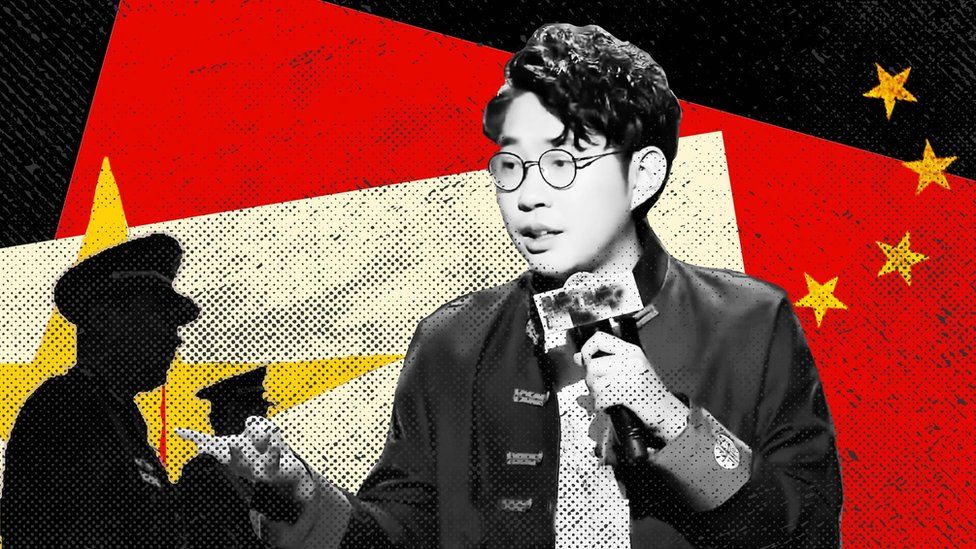
In mid-May, Chinese stand-up comic Li Haoshi, better known by his stage name House, cracked a joke about his adopted dogs.
Standing on a stage in a packed venue in Beijing, he said his dogs “fought to win, forged exemplary conduct” – a catchphrase that Chinese leader Xi Jinping has used while speaking about the military.
It drew laughs from the audience, but one of them later commented on Weibo, or China’s version of Twitter, that it made him uncomfortable because it insulted the “people’s army”. State media and officials swiftly condemned it as a “serious insult” to the Chinese army. Li was detained, and the company he worked for – Xiaoguo, one of the most successful stand-up comedy groups in China – was fined nearly 15 million yuan ($2.1m; £1.7m).
The fallout has dealt a heavy blow to China’s burgeoning but lively stand-up comedy scene. Even as other spaces for public expression have shrunk under Mr Xi’s increasingly censorious regime, stand-up comedy has thrived, allowing young people to take a light-hearted view of their joys and frustrations. Is that little bit of freedom now in danger?
The BBC contacted 13 comics and two managers to find out how Li’s detention was playing out in his industry. But no-one wanted to be interviewed.
A relatively new import from the West, stand-up comedy in recent years has become a popular form of entertainment among young Chinese. Open mic events have mushroomed in cities across the country, drawing aspiring comics and audiences – the cheapest tickets cost less than five yuan ($0.7; £0.5). There were about 18,500 live performances in 2021, raking in nearly 400 million yuan, according to a report by the China Association of Performing Arts. The number of shows only grew in 2022 as harsh lockdowns were implemented across China.
“Stand-up comedy is like an anaesthetic. It is irreplaceable,” says *Iris, a 30-year-old interior designer in Shanghai. A long-time fan, she says it was her lifeline during Shanghai’s gruelling 65-day lockdown last year, offering her rare consolation and a sense of connection. The city made international headlines for its sweeping and exhausting restrictions that caused food shortages and fuelled public anger.
“Everyone wanted to talk about their feelings during the lockdown. It would have made excellent material, but everyone also knew they could not talk about it,” she says.
And yet there were jokes. She remembers a subtle one about receiving vegetable “blind boxes”. The obvious reference was to the recent craze in China over collectible toys in mystery packaging, hence the term blind boxes. But it was also a dig at how Shanghai residents could only eat vegetables sent by the community because no-one was allowed to leave their home, not even to shop for groceries.

But the industry’s success has forced it to endure layers of censorship well before Li’s detention.
In a now-removed Weibo post, a writer who scripts for comedy shows said a company that had approached her last year sent her a long list of taboo topics. It included senior Party leaders, officials, extra-marital affairs, homosexuality, gambling, poverty and the pandemic. Then there were a series of meetings to discuss the potential impact of the jokes – how sensitive was it? Who might it offend ? The scripts were then submitted to relevant departments, but officials wouldn’t say much, or even make clear suggestions.
“The industry needs to spend 80% of its energy to create content, and then 500% of its time and energy to deal with censorship. It is a huge waste of resources, and it’s a waste of youth too,” the comic wrote.
This has didn’t stop comics from “playing edge ball”, a Chinese phrase for sensitive discussions that evade censorship. They managed to survive, poking fun at China’s many challenges – such as gender inequality and youth unemployment – and its controversial Covid measures. The gags, which often became trending topics on Weibo, sparked conversations.
“He looks so ordinary but how can he be so confident?” female comic Yang Li said about male confidence in an episode in 2020, inadvertently coining a now popular phrase, “ordinary but confident men”.
Traditional tropes – such as the social pressure to marry – were an easy target. “Some people around us are especially annoying. After they marry, they urge others to marry. Marriage is a mysterious institution. Once you are in, you have to recruit members, like a pyramid scheme,” joked Yan Yi Yan Yue, a comedian due of twin sisters.
But some topics were still off limits. When Chi Zi took on Mr Xi’s signature zero-Covid policy and the Party’s censorship during his US tour in February, his social media accounts were quickly taken down.
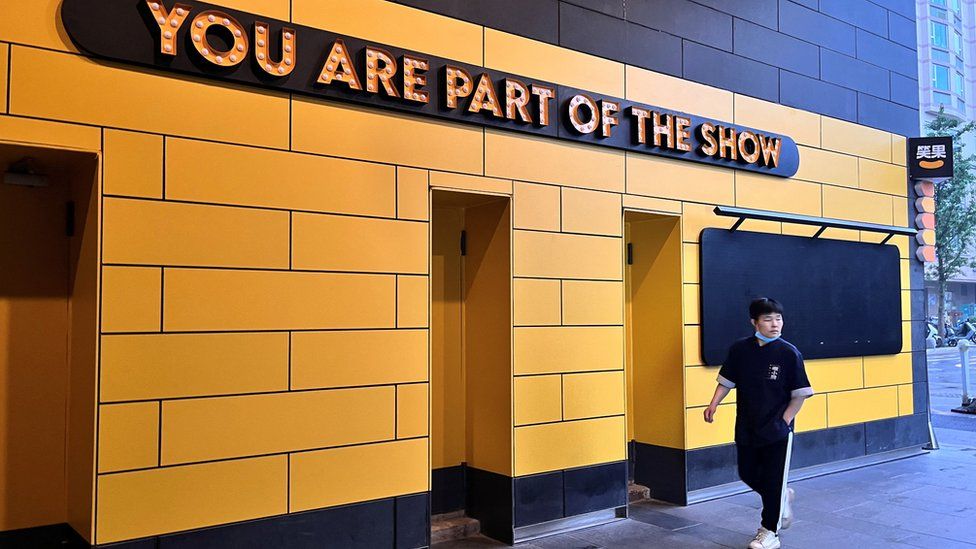
The fear of reprisal makes Chinese comedians cautious, but that caution, some say, also takes the edge off their humour.
“They are talking about issues that don’t really matter. Any issues related to the government or the party are not allowed to be challenged,” says *Lan D, a 25-year-old Chinese technician based in Ireland.
When she returned home earlier this year – the first time in three years since the start of the pandemic – she wanted to watch a live performance by Xiaoguo in Shanghai. But she was disappointed they had all been cancelled: “They are like my political ‘snacks’. I can’t quit it.”
But will the performances she loves weather the current storm? “There will be a chilling effect,” says Dr Sheng Zou, a scholar of media and popular culture at Hong Kong Baptist University. “It will definitely intensify self-censorship within the industry.”
Young Chinese like Iris are less optimistic. Sometimes she fears there is no future for Chinese stand-up comedy.
But she hopes she is proved wrong. “I want to hear Chinese people roast China,” she says, adding that compromises are necessary for the industry to survive.
“It would have made more sense if House [Li] was making fun of the People’s Liberation Army for three hours. But it was just those words.”
Looking back, she believes Li’s joke was not worth the trouble it caused, not just for him but for the whole industry. She says she had never heard of the military slogan that his joke referred to until he cracked it, and only realised it was politically sensitive when a friend who is a member of the Communist Party told her so.
“[Stand-up comedy] is like dancing with shackles. But as long as there is even the slightest opportunity to express themselves, they are willing to speak. And that is touching.”
*Names have been changed to protect their identities.
Additional reporting by Zhijie Shao from BBC Chinese.

Read more of our coverage on China

Related Topics
-
-
1 June 2022

-
-
-
25 January 2021

-
Kashmir battles alarming drug addiction crisis
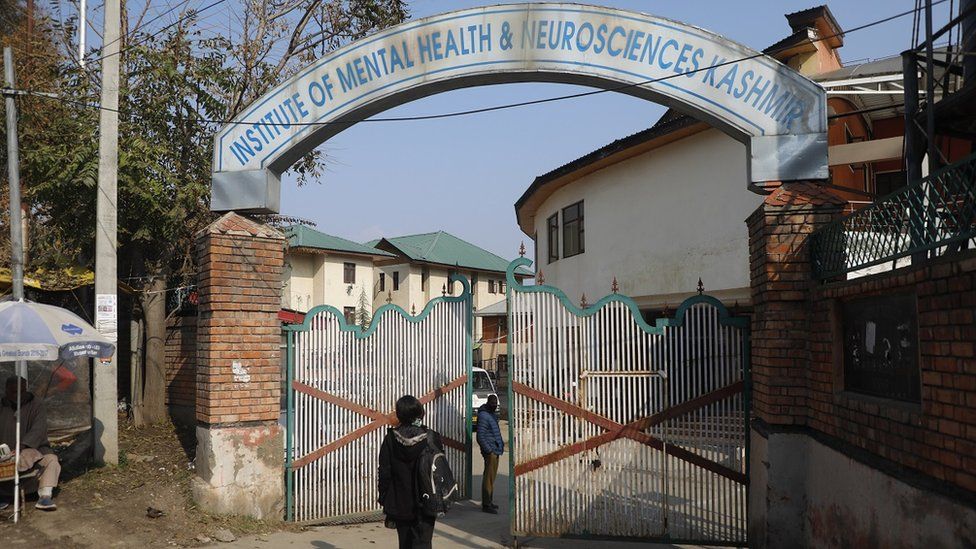 Umer Asif
Umer AsifOn a rainy morning in May, dozens of young men queued outside a drug de-addiction centre in Srinagar city in Indian-administered Kashmir.
Many of them were teens accompanied by their parents, waiting for their turn to receive medicines from the Institute of Mental Health and Neurosciences (IMHANS), the only government-run drug rehabilitation centre in Kashmir. The medicines help reduce their withdrawal symptoms and prevent the transmission of infectious diseases.
“Did you take heroin again?” a doctor asks a young man after examining the size of his pupils.
“Yes, I couldn’t control myself,” he replies.
For decades, life in the Himalayan region of Kashmir has been racked by conflict and unrest. Nuclear-armed neighbours India and Pakistan claim it in full but administer only parts of it, and have fought two wars over it. Since 1989, there has also been an insurgency against Indian rule in Kashmir, costing tens of thousands of lives. In 2019, India divided the former state of Jammu and Kashmir into two federally administered territories, flaring up tensions further.
Now the region is staring at a new crisis: officials say drug addiction is becoming a serious worry in Kashmir, devastating the lives of young people. They also say there is a sharp rise in the consumption of hard drugs such as heroin.
In March, a federal minister told parliament that nearly a million people in Jammu and Kashmir – around 8% of the region’s population – use drugs of some kind, including cannabis, opioids or sedatives. While there are no comparable figures from earlier, doctors say there is a surge in the number of patients.
“Until a decade ago, we used to see 10-15 cases of drug addiction per day at our hospital. Now we see 150-200 cases a day. This is alarming,” says Dr Yasir Rather, a psychiatrist and professor at IMHANS.
Experts attribute this to several factors, including a shortage of jobs and mental health issues arising from living in a conflict zone.
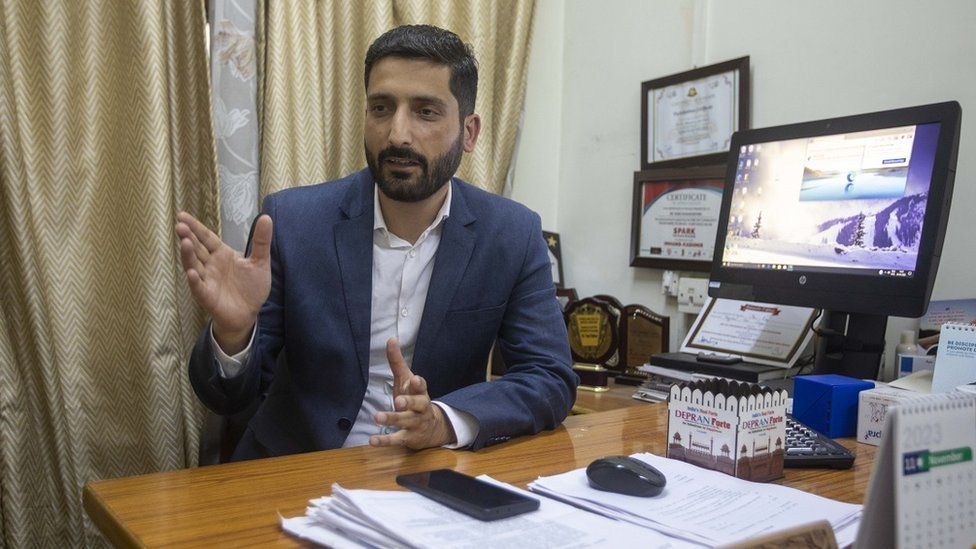
In press conferences, top police officials have highlighted the seizure of large quantities of banned substances, and said they have unearthed links to Pakistan. They allege that the money from drug smuggling is used to fund militancy in Kashmir – Pakistan has not officially responded to this allegation. But some drug dealers told this reporter that they also get supplies from other Indian states including Punjab and capital Delhi.
Substance abuse is not a new problem in the region. “But earlier, people would take cannabis or other medicinal opioids and heroin was not in the picture,” Dr Yasir Rather says.
According to a survey conducted last year by the Jammu and Kashmir administration (there has been no elected government in the region since 2018), more than 52,000 people in Kashmir admitted to using heroin. The report says that on an average, a user spent around 88,000 rupees ($1,063.54; £860) a month to get the drug.
The numbers are likely to be higher as many people may not admit to their addiction or seek help due to the stigma around drugs.
Dr Mushtaq Ahmad Rather, director of health services in Kashmir, said that the government understands the severity of the problem and has taken several initiatives to tackle it.
But experts say there is an urgent need for more de-addiction centres where addicts can be admitted and receive consistent treatment.
While there are a few private institutions, there are only two public drug de-addiction centres in Kashmir, and both are located in Srinagar – one is IMHANS and the other is operated by the police.
Dr Mushtaq Rather says that the government has also set up Addiction Treatment Facility Centres (ATFCs) in each district. But unlike de-addiction centres, ATFCs don’t have admission facilities. They are small clinics with one doctor, a counsellor and a nurse to treat patients.
“These ATFC centres provide counselling, treatment and medicines to the patients for free,” says Dr Mushtaq Rather.
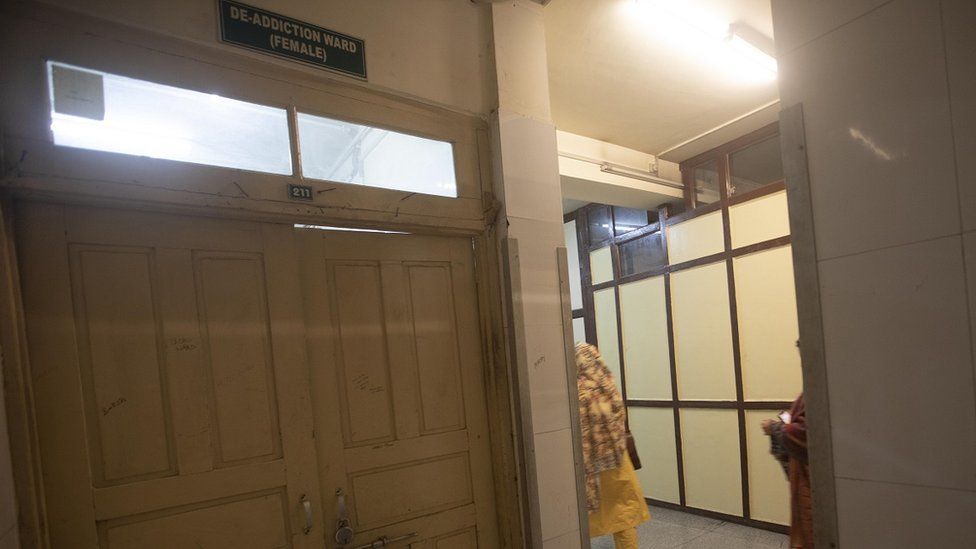
At IMHANS, the doctors are overwhelmed with patients who have come from all over Kashmir. While some drug users have voluntarily admitted themselves, others have been brought by their families. Most of the patients are men, though there are a few women as well.
“This is a sweet poison that will destroy you,” says Danish Nazir (name changed), 23, a patient who has been at IMHANS for three weeks.
Mr Nazir, a businessman, runs a shop in Srinagar and says he would use his income to buy some heroin almost every day. But he recently got engaged and when his fiancée found out, she encouraged him to get help. The couple have decided they will only get married after Mr Nazir recovers completely.
Another patient, a 15-year-old boy who barely has a stubble on his face, says he started using drugs with his friends.
“They are easily available here,” he said.
Some social activists say that the government has the primary responsibility of breaking the chain of drug supply.
“The police and the administration need to act swiftly on any inputs or information received about drug dealers,” says Syed Shakeel Qalandar, an activist based in Kashmir.
Vijay Kumar Bidhuri, the divisional commissioner of Kashmir who supervises administrative issues, did not respond to a request for comment.
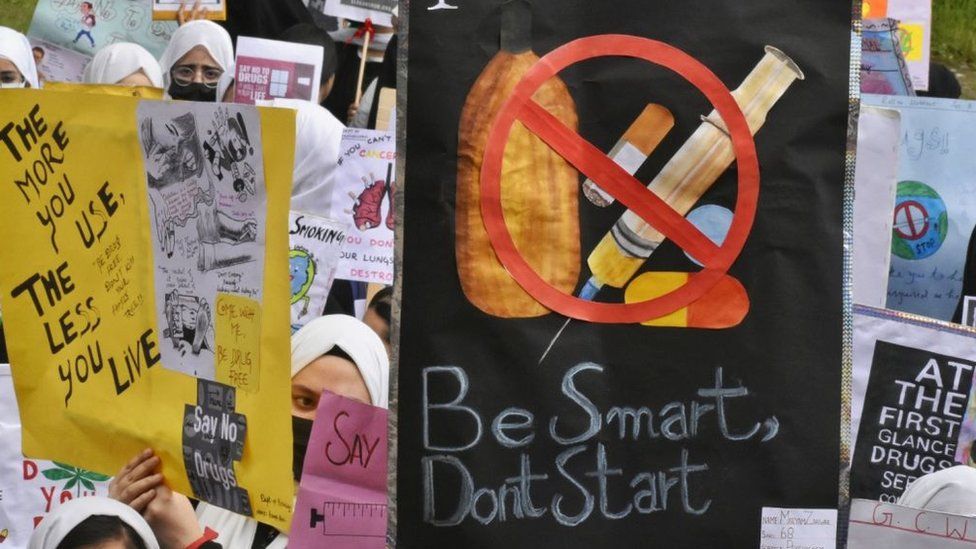
Vijay Kumar, the police chief of Kashmir, also did not respond to text messages. Police records show that more than 5,000 cases have been registered under the anti-narcotics law between 2019 and 2022. Officials have said they are conducting massive operations against drug dealers and the people who supply drugs to them. Apart from laws related to to the sale and use of narcotics, they are also using stringent laws such as the Public Safety Act – which allows police to detain people for at least a year without a trial – to crack down on drugs.
“But tackling drug abuse is not only the job of the police. Society also needs to come forward,” a top police official told the BBC on condition of anonymity.
Apart from the serious physical and negative effects of drug abuse, there are other consequences too. Dr Yasir Rather says that users sometimes share syringes, increasing chances of contracting infections such as Hepatitis C.
There has also been an uptick in other crimes such as theft as people seek to get money to fund the addiction.
While the situation is serious, people like Mr Nazir are trying hard to get their life back on track. He says he is feeling better, and has words of hope for others.
“You may find it difficult initially but if you have the motivation, you can do it. Your family needs you,” he said.
BBC News India is now on YouTube. Click here to subscribe and watch our documentaries, explainers and features.

Read more India stories from the BBC:

-
-
2 February 2017
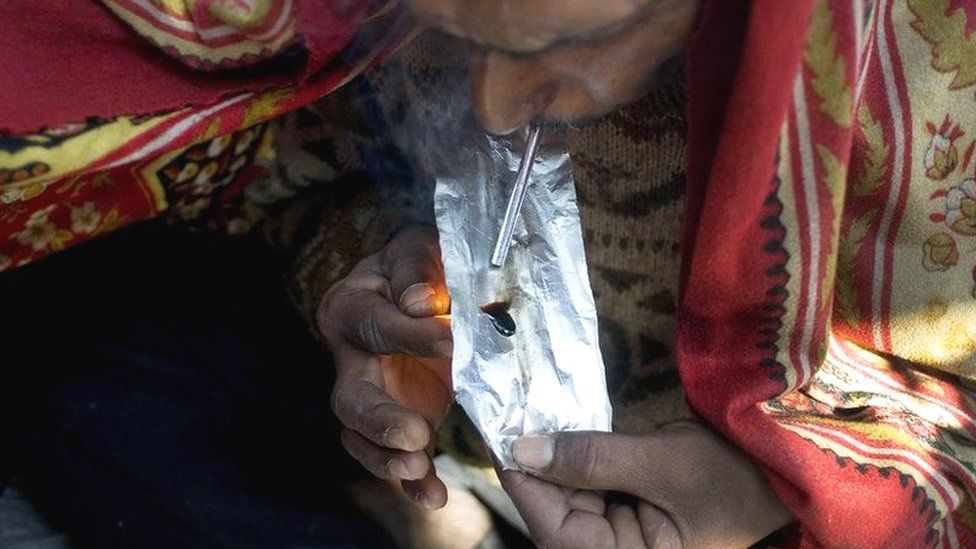
-
‘Thought I was staying next to a supermarket’: When group buying becomes a neighbour’s nightmare

WHAT GROUP BUY ORGANISERS SAY
While Ms Goh had a difficult experience, group buy organisers who spoke to CNA said they have not had similar complaints from hosts’ neighbours.
One of them is Sengkang Group Buy, which has two collection points in the estate and more than 9,000 followers on Instagram.
Asked about minimising disturbance to neighbours, co-founder Cheryl Guo said: “We need to make sure all orders are correct from vendors upon receiving the items, and they have to be on time as well.”
Groupbuyssg, which has more than 6,400 members on Telegram, no longer has collection points as it fully transitioned to islandwide delivery during the pandemic.
But co-founder Winson Lee said he has heard complaints from customers about other group buys, such as food safety concerns over frozen food being left outside the host’s flat.
When Groupbuyssg still had collection points, Mr Lee said the organisers would strongly encourage hosts to establish a good relationship with their neighbours.
“In fact previously many neighbours of our hosts are themselves participants of our group buys. And they appreciate that they stay next to hosts so they can collect their items easily without having to pay for delivery.”
Mdm Jolene Lim, a host who lives in Queenstown, said her neighbours have asked her about her group buys out of curiosity, but have never complained about it.
She has hosted group buys for more than two years, usually on a weekly basis. The scale is “much smaller” now that most people have returned to the office.
She usually asks customers to state the timing of their collection in advance and will get their purchases ready. “Prepare in advance so they can just grab and go instead of waiting,” she said.
For now, Ms Goh has found some relief from her predicament, although it is uncertain if that will last.
Earlier this year, she lodged complaints with HDB and her town council. It took some time, but her neighbour was eventually served a few warning letters and asked to attend a meeting with authorities, according to Ms Goh.
It helped that she had set up the CCTV outside her home at the suggestion of the town council, as this provided evidence of the footfall at her neighbour’s house.
When Ms Goh spoke to CNA in late April, deliveries had slowed to once a day for the past two weeks, and the neighbour would bring the items downstairs for customers to pick them up.
More recently, she said the group buying had stopped entirely as the neighbour appeared to have left the country.
Commentary: Why Southeast Asia should care about the 2024 elections in Taiwan

During that period, the DPP administration had obtained US approval to acquire eight diesel electric submarines. However, the budget for this acquisition was unable to pass due to the KMT-led pan-blue majority in parliament. Therefore, the composition of the Legislative Yuan bears watching as well.
2024 ELECTION HAS BEARING ON CROSS-STRAIT TIES
Due to Taiwan’s strategic location within the so-called “first island chain” and its status as a potential flashpoint between the US and China, the outcome of the 2024 election in Taiwan will have implications for both cross-strait ties and US-China rivalry.
Lai, for example, has emphasised his commitment to upholding President Tsai Ing-wen’s “status-quo approach” to cross-strait relations, as well as her efforts in strengthening US-Taiwan relations and fostering ties with democratic nations worldwide.
He has also expressed his intention to enhance Taiwan’s self-defence capabilities, stressing that true peace can only be achieved by being able to defend oneself with strength.
Despite Lai’s repeated assertions on preserving the status quo, it is likely that Beijing will maintain its assertive stance towards Taiwan under a Lai presidency.
Hou, on the other hand, is likely to receive a more positive response from Beijing as he represents the traditionally China-friendly KMT. However, his foreign policy and national security platform is still being fleshed out.
While he has publicly rejected both the “One Country, Two Systems” formula and Taiwan independence, he has yet to comment on the 1992 consensus that former president Ma Ying-jeou (2000 to 2008) committed to, which states that both sides of the Taiwan Strait belong to one China.
The Big Read: Can the growing number of ultra-rich in Singapore live in harmony with the average Joe?
WHAT CULTURAL NORMS DO THE ULTRA-WEALTHY HAVE TO BE AWARE OF? Back in 2018, an unauthorised secondary school social studies guidebook, which contained sweeping generalisations about people in Singapore from high and low socio-economic status (SES), generated significant flak online, with Prime Minister Lee Hsien Loong weighing in on theContinue Reading





